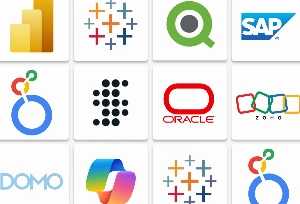Brazil boasts the largest ICT market in Latin America, valued at nearly $112 billion in 2024. São Paulo and Rio de Janeiro lead its tech sector, especially in fintech, e-commerce, and cloud-based services. Brazil’s IT services segment is expected to hit $21.5 billion in 2025, making it a powerful player in the outsourcing landscape, despite challenges in bureaucracy and ease of doing business.
Mexico is the region’s second-largest software market, with a strong emphasis on software development, fintech, and digital commerce. In 2023, the country produced over 175,000 STEM graduates, although only a fraction enter tech roles. With over 700,000 software developers and a ranking of 12th globally in innovation, Mexico remains a strategic nearshore destination for U.S. companies.
Argentina continues to gain traction with its skilled workforce of around 115,000 software developers and notable government support for innovation in sectors like biotech and fintech. Ranking 69th on the Global Innovation Index, Argentina combines technical expertise, high English proficiency, and competitive rates to attract international clients.
Uruguay, though smaller in size, has a thriving software export sector valued at nearly $1 billion, powered by more than 1,000 tech companies. Montevideo is a key hub for startups in fintech, edtech, and health tech. With strong digital infrastructure and a top-3 rank in digital readiness in the region, Uruguay offers high-value outsourcing opportunities.
Costa Rica is emerging as a digital innovation leader. The country has a well-educated workforce of around 45,000 software developers and graduates over 7,000 STEM students annually. With 22% of its ICT companies operating in Industry 4.0 domains, Costa Rica’s tech sector benefits from government-backed innovation hubs and investment incentives.
Chile stands out as the most innovative country in Latin America, according to the Global Innovation Index. With around 61,000 IT professionals and a projected ICT market size of US $13.9 billion by 2026, Chile offers strong infrastructure and a business-friendly environment. Initiatives like Startup Chile and the Digital Agenda continue to fuel its growth as a reliable tech outsourcing hub.
How to Choose the Right IT Outsourcing Partner in Colombia
Choosing the right local partner is just as important as selecting the right country. Here's a step-by-step guide to making the best decision when software outsourcing to Colombia.
# Define Your Project Scope
Before evaluating vendors, clarify what you’re building. A well-defined scope helps you filter partners based on their capabilities and relevant experience.
What to Include:
- Business goals and KPIs
- Core deliverables and deadlines
- Budget and tech stack preferences
- Project constraints (security, compliance)
- Communication and reporting expectations
#2 Understand the Local Models: Onshore vs Nearshore
If you're based in North America, Colombia offers nearshore advantages: a compatible time zone (CST/EST), high English proficiency, and strong cultural alignment. Whether you're augmenting your in-house team or fully outsourcing a product build, nearshore software development Colombia ensures real-time collaboration without sacrificing cost efficiency.
#3 Choose the Right Engagement Model
Colombian vendors typically offer:
- Dedicated Teams: Ideal for scaling long-term projects with full control over the team structure and processes.
- Staff Augmentation: Great for closing short-term skill gaps or extending your in-house team with Colombian developers.
- Project-Based Outsourcing: Suited for startups building MVPs or enterprises offloading entire projects to a local partner.
#4 Evaluate Colombian Vendors Strategically
Shortlist companies based on their technical expertise and fit for your industry. Look for:
- Experience: Case studies in your vertical (fintech, healthcare, retail)
- Tech Stack: Alignment with your preferred technologies and architecture
- Talent Quality: Colombia produces over 13,000 ICT graduates annually and has 150,000+ software professionals
- Certifications: ISO, SOC 2, or other quality and security standards
- Clutch Profiles: Client reviews and verified ratings of over 400 Colombian vendors are listed on Clutch
- Cultural Fit: Does the team share your working style and values?
#5 Validate Communication and Workflow Compatibility
Clear and consistent communication is crucial for successful software outsourcing to Colombia.
- Check Time Zone Overlap: Colombia’s time zone closely aligns with US business hours
- Confirm English Proficiency: Most developers in major hubs like Bogota or Medellin speak fluent English
- Use the Right Tools: Slack, Zoom, Jira, and Confluence should be standard
- Agree on Processes: Clarify Agile practices, sprint planning, and reporting frequency
#6 Start Small, Scale Smart
Test your chosen vendor with a pilot project or short engagement before committing long-term. It’s the best way to evaluate delivery quality, team dynamics, and overall reliability while software outsourcing to Colombia.
Pro Tip: Focus not only on technical expertise but also on how well a vendor collaborates, communicates, and aligns with your business goals. In a vibrant and growing tech ecosystem like Colombia’s, the right partner can become a true extension of your team.
Final Thoughts: Is IT Outsourcing to Colombia Right for You?
IT outsourcing to Colombia has firmly positioned itself as a strategic destination, especially for North American companies seeking time zone alignment, cost-efficiency, and access to top-tier tech talent.
While there are a few challenges to be aware of, most can be easily managed with the right partner.
At inVerita, we help businesses tap into Colombia’s growing tech ecosystem through flexible cooperation models from staff augmentation to full-cycle development teams.
With a presence in Medellín and deep expertise in building distributed teams, we ensure smooth collaboration and high-quality delivery.
Let’s talk about how we can help you scale your team efficiently. 
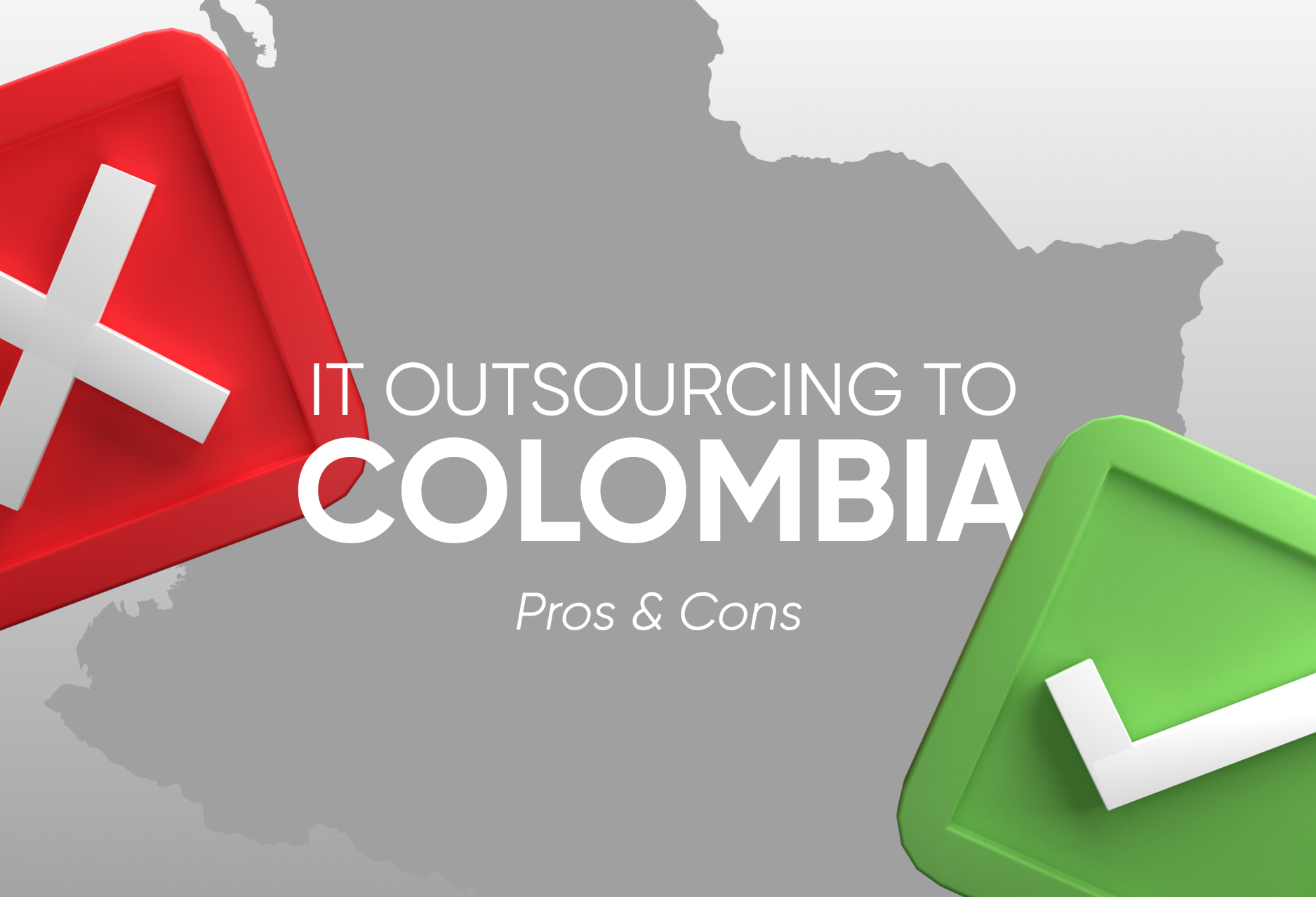

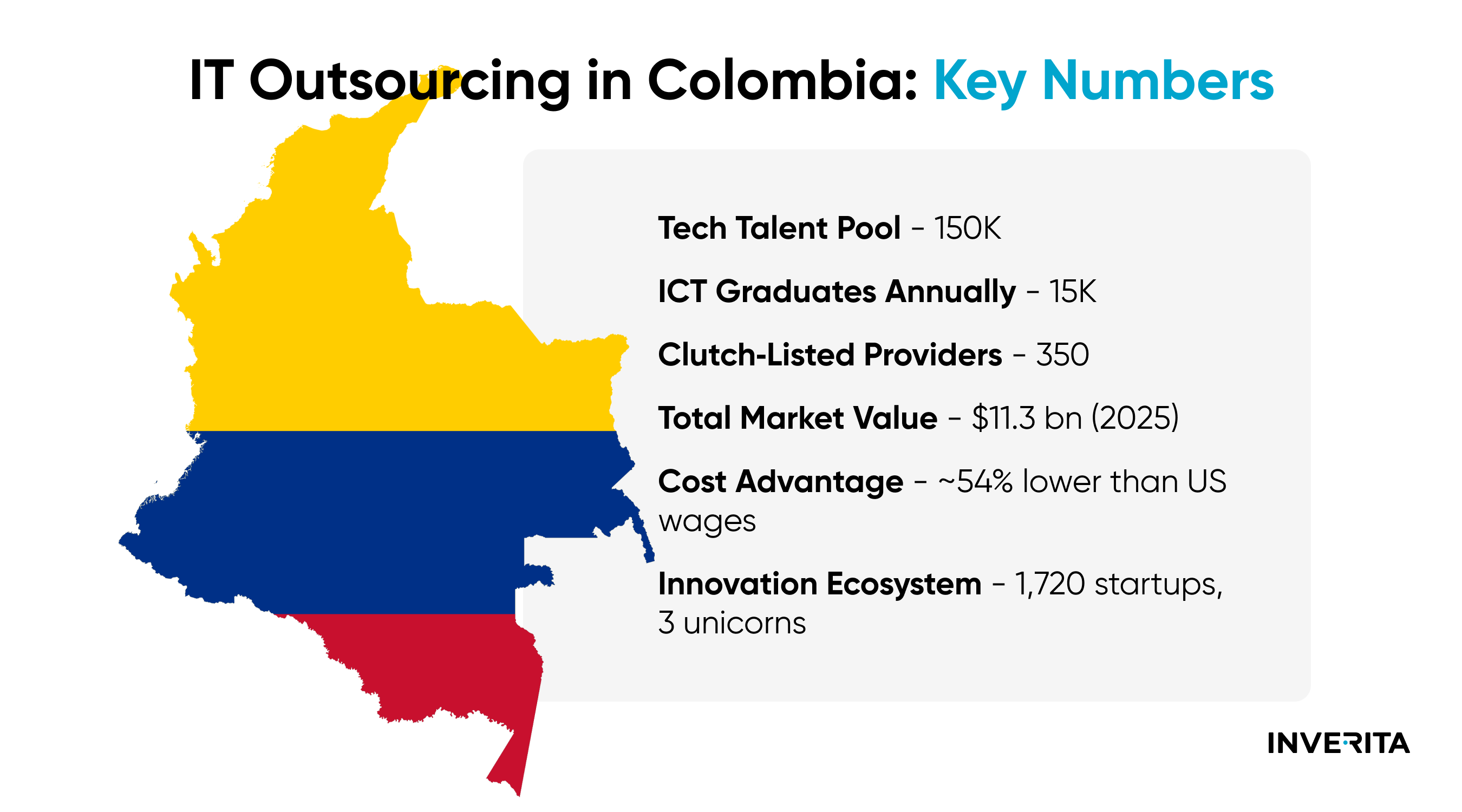
_1752143069.png)
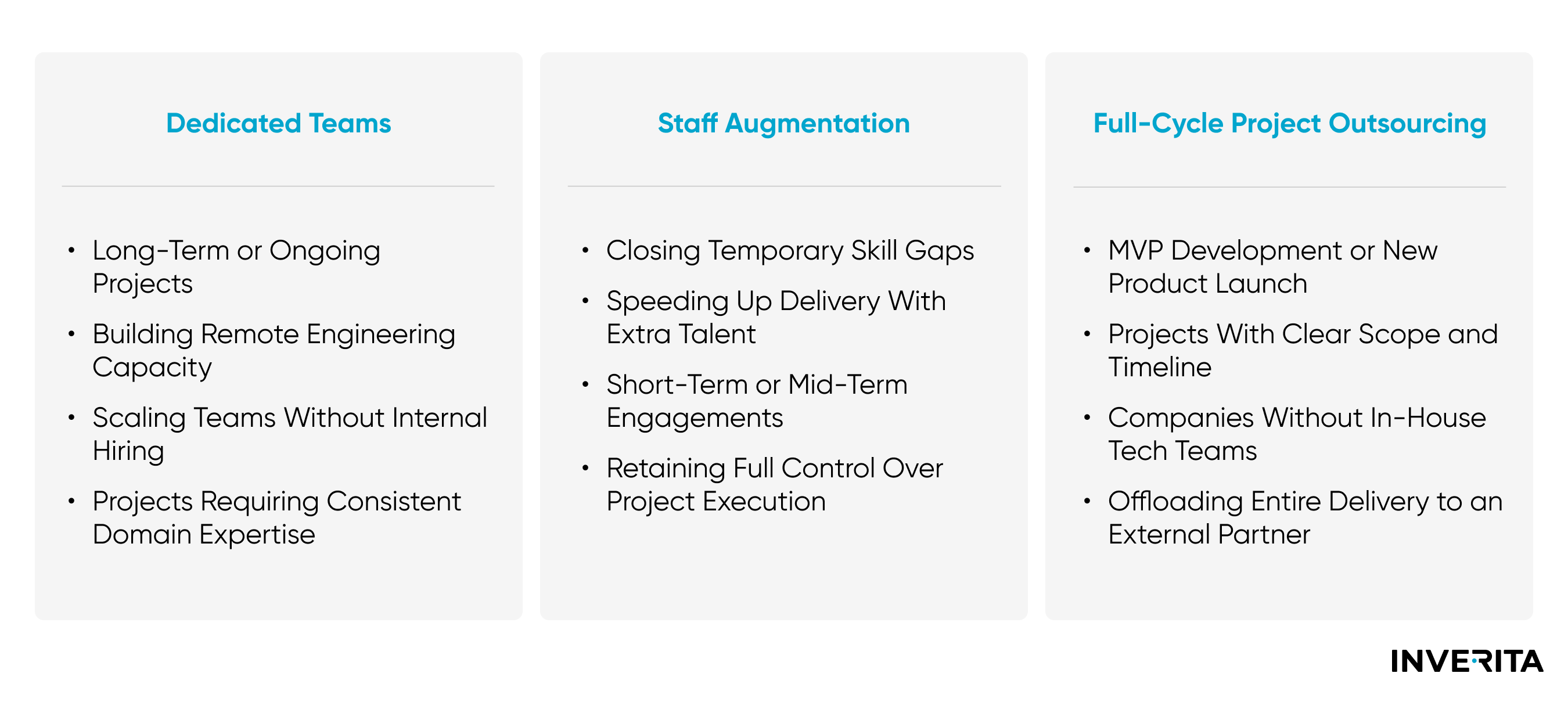
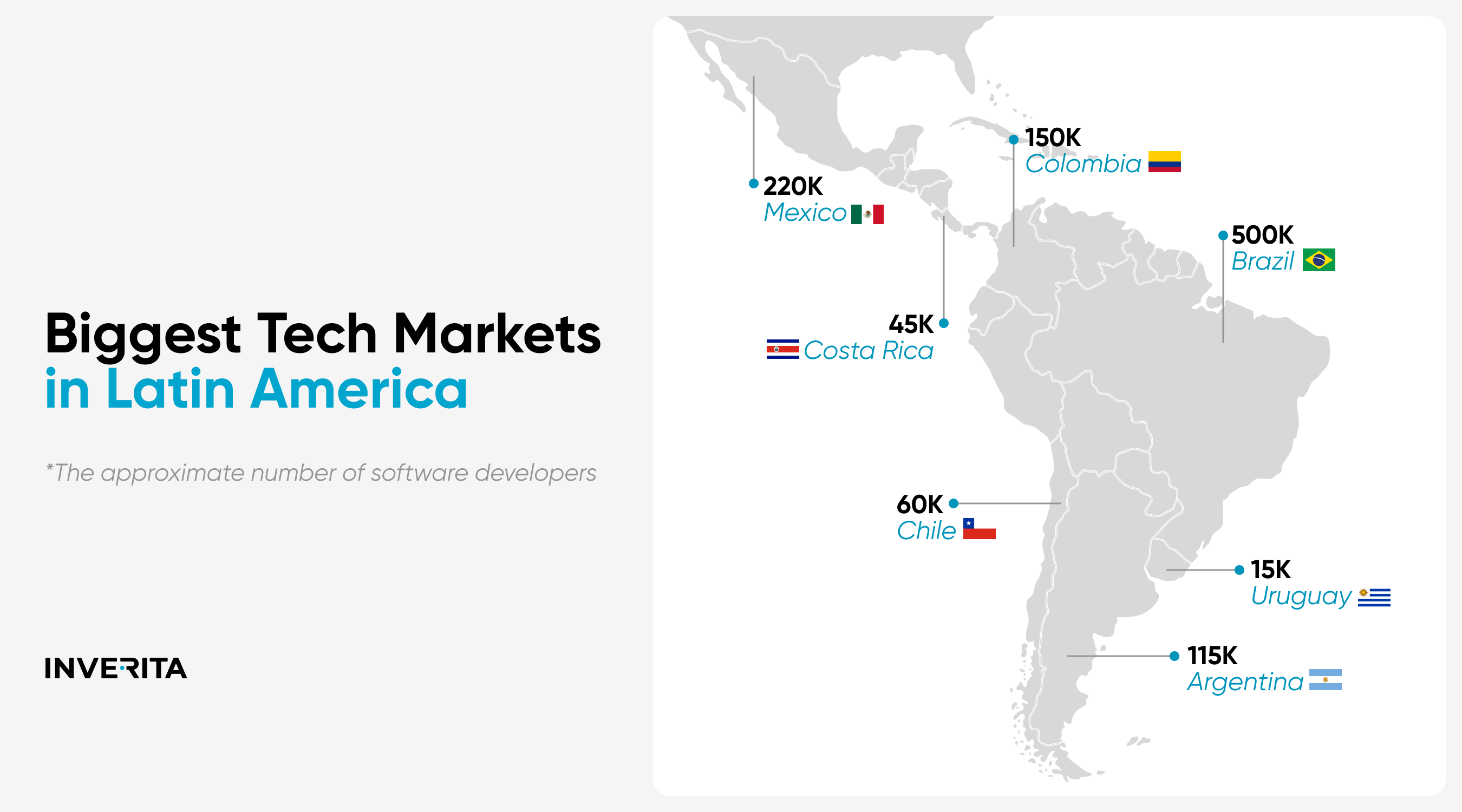

_1764586939-small.webp)
